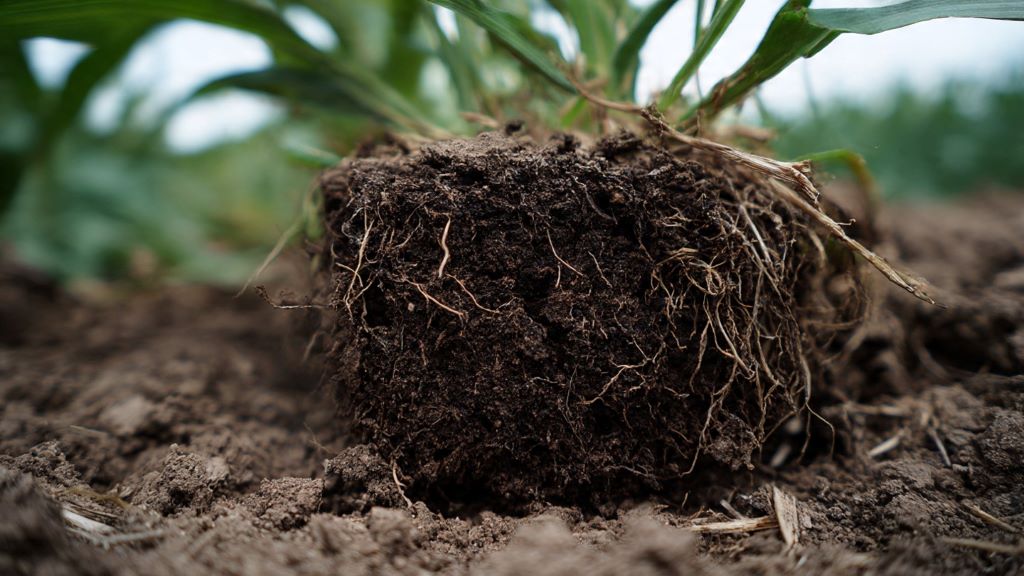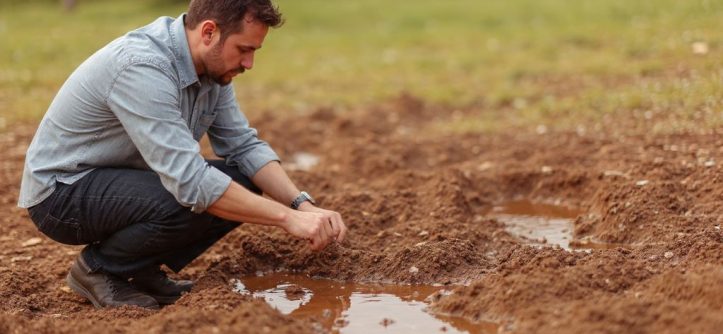Understanding Soil Aeration Problems in Your Garden
Healthy gardens begin beneath the surface. When soil cannot breathe properly, plants struggle to thrive regardless of how much water or fertilizer you provide. Poor soil aeration creates a hostile environment where roots cannot access the oxygen they desperately need. According to experts at Boyers Lawn Care, recognizing the warning signs early can save your garden from serious damage. Additionally, understanding these indicators helps you take corrective action before plant health deteriorates beyond repair.
Many gardeners overlook soil aeration until their plants show visible distress. However, by that point, the damage may already be extensive. The good news is that soil sends clear signals when aeration becomes inadequate. Learning to read these signs empowers you to maintain vibrant, productive garden beds throughout the growing season.
Common Visual Indicators of Compacted Soil
Compacted soil is one of the primary culprits behind poor aeration. When you examine what causes soil compaction, you will discover that heavy foot traffic, machinery use, and natural settling all contribute to this problem. Compaction squeezes air pockets out of soil, creating a dense barrier that roots cannot penetrate effectively.
One of the most obvious signs appears when you try to insert a shovel or garden fork into the ground. If the tool barely penetrates the surface or requires significant force, your soil likely suffers from compaction. Similarly, after rainfall, compacted areas often form puddles that persist for hours or even days. This standing water indicates that the soil cannot absorb moisture at a normal rate.
Another telltale sign involves weed growth patterns. Certain weeds, particularly those with deep taproots like dandelions, actually thrive in compacted conditions. Therefore, an abundance of these resilient plants may signal underlying aeration issues. Conversely, desirable plants in the same area may appear stunted or discolored.
Plant Health Symptoms Related to Poor Aeration
Plants communicate their distress through various symptoms. When soil aeration becomes inadequate, roots suffocate slowly, leading to visible changes above ground. Yellowing leaves, especially on plants that should display vibrant green foliage, often indicate oxygen deprivation at the root level.
Stunted growth represents another critical warning sign. If your plants seem frozen in time, producing minimal new growth despite adequate sunlight and water, poor aeration may be the hidden culprit. Additionally, plants may develop shallow root systems as they desperately search for oxygen near the surface rather than establishing deep, healthy roots.
Wilting plants present a confusing scenario for many gardeners. You might increase watering, thinking your plants are thirsty, only to see the problem worsen. Ironically, poorly aerated soil often stays too wet, drowning roots even as leaves wilt from their inability to absorb water properly. This contradiction highlights why understanding soil structure matters so much.
Water Drainage and Retention Issues
Proper soil aeration directly impacts how water moves through your garden. When air pockets disappear due to compaction or poor soil structure, water has nowhere to go. Therefore, you may notice that irrigation water runs off the surface rather than soaking in.
Conversely, some gardens with poor aeration develop soggy patches that never seem to dry out. These waterlogged areas create anaerobic conditions where beneficial soil organisms cannot survive. Meanwhile, harmful bacteria that thrive without oxygen begin to multiply, potentially causing root rot and other diseases.
Testing drainage in your garden requires only a simple experiment. Dig a hole approximately one foot deep and fill it with water. If the water takes more than four hours to drain completely, your soil likely has aeration problems. Healthy, well-aerated soil should drain within an hour or two.
Soil Texture and Structure Problems
The physical characteristics of your soil reveal much about its aeration capacity. When you grab a handful of moist soil and squeeze it, the resulting clump tells a story. Soil that forms a tight, hard ball that does not crumble easily suffers from poor structure. Furthermore, this compacted texture prevents air from circulating freely.
Crusty surface layers present another concern. If your garden develops a hard cap after rain or watering, this crust prevents both air and water from entering the soil. Breaking through this barrier becomes necessary, yet the underlying problem remains if you do not address the root cause.
Heavy clay soils naturally resist aeration more than sandy soils. However, even clay can maintain adequate air spaces with proper management. The key involves incorporating organic matter regularly to improve soil structure. According to research from the University of Minnesota Extension, adding compost helps create stable aggregates that resist compaction while maintaining essential air pockets.

Biological Indicators of Poor Aeration
Healthy soil teems with life. When aeration declines, this biological activity diminishes dramatically. One simple indicator involves examining earthworm populations. These beneficial creatures require oxygen to survive, so their absence often signals aeration problems. Additionally, earthworms create channels as they move through soil, naturally improving aeration in the process.
Beneficial fungi and bacteria also require oxygen to thrive. When these organisms decline, soil health deteriorates rapidly. You might notice an unpleasant, sour smell emanating from poorly aerated soil. This odor results from anaerobic decomposition, a process that occurs when oxygen-loving organisms die off and are replaced by those that function without air.
Soil color provides another clue. Well-aerated soil typically appears dark brown or black, indicating healthy organic matter decomposition. However, poorly aerated soil may develop gray or blue-gray patches. These colors signal reduced iron compounds that form in oxygen-poor environments.
Seasonal Changes and Weather Impacts
Different seasons affect soil aeration in various ways. Spring often brings the greatest challenges as winter snow melts and spring rains saturate the ground. Heavy clay soils particularly struggle during this transition period. Moreover, repeatedly walking on wet soil during spring causes severe compaction that persists throughout the growing season.
Summer heat can actually worsen aeration problems in some cases. As soil dries, clay particles bond together more tightly, creating rock-hard conditions. This baking effect makes subsequent water penetration nearly impossible. Therefore, maintaining consistent moisture levels helps preserve soil structure.
Fall and winter freeze-thaw cycles offer some benefits. As water freezes, it expands, creating small fractures in compacted soil. These natural processes provide temporary relief, though they rarely solve severe aeration problems completely.
Long-Term Consequences of Ignoring Aeration Issues
Neglecting soil aeration problems leads to progressive deterioration. Root systems become increasingly shallow and weak, making plants more susceptible to drought stress. Additionally, poorly rooted plants cannot access nutrients stored deeper in the soil profile.
Disease pressure increases significantly in poorly aerated soils. Fungal pathogens that cause root rot thrive in waterlogged, oxygen-poor conditions. Once established, these diseases spread rapidly and prove difficult to eliminate. Prevention through proper aeration remains far easier than treating widespread disease problems.
Soil structure degradation accelerates over time when aeration issues persist. What begins as mild compaction can transform into nearly impenetrable hardpan layers. Breaking up these dense zones requires significant effort and may necessitate professional intervention.
Solutions and Prevention Strategies
Addressing poor soil aeration requires a multifaceted approach. Core aeration, which removes small plugs of soil, immediately increases air circulation. This mechanical process proves especially effective for lawns and larger garden areas. Furthermore, the holes created allow water, air, and nutrients to penetrate deeply.
Adding organic matter represents the most sustainable long-term solution. Compost, aged manure, and other organic amendments improve soil structure gradually. These materials create stable aggregates that resist compaction while maintaining crucial air spaces. According to experts at Real Simple, incorporating two to three inches of compost annually can transform even the most challenging soils.
Reducing foot traffic in garden beds helps prevent future compaction. Installing permanent pathways directs traffic away from planting areas. Additionally, avoiding working in the garden when soil is wet prevents unnecessary compaction. Wet soil compresses much more easily than dry or moderately moist soil.
Cover cropping offers another powerful tool. Plants with deep taproots naturally break up compacted layers as they grow. When you till these cover crops back into the soil, they add organic matter while the channels they created improve aeration. This biological tillage costs little yet provides substantial benefits.
Conclusion
Recognizing the signs of poor soil aeration empowers you to take corrective action before plants suffer irreversible damage. From visual indicators like standing water and stunted growth to biological clues such as earthworm absence, your garden communicates its needs clearly. Understanding these signals allows you to implement effective solutions that restore healthy soil structure. Moreover, preventing aeration problems through proper management proves far easier than correcting severe compaction. By maintaining loose, well-structured soil rich in organic matter, you create an environment where plants can develop robust root systems and thrive throughout the growing season.
Frequently Asked Questions
What is the fastest way to improve soil aeration?
Core aeration provides immediate results by removing small soil plugs and creating channels for air and water movement. However, combining this mechanical approach with organic matter addition delivers the most lasting improvements to soil structure and aeration capacity.
How often should I check my garden soil for aeration problems?
Inspect your soil at least twice annually, ideally in early spring and mid-summer. Additionally, monitor plant health throughout the growing season, as sudden wilting or stunted growth may indicate developing aeration issues that require immediate attention.
Can overwatering cause soil aeration problems?
Yes, excessive watering fills air pockets with water, creating anaerobic conditions that suffocate roots. This situation becomes especially problematic in naturally heavy soils. Therefore, water deeply but infrequently to encourage deep root growth while maintaining adequate air spaces.
Do raised beds eliminate soil aeration concerns?
Raised beds significantly reduce aeration problems because the soil remains loose and is never walked upon. However, even raised beds require periodic organic matter addition and can develop compaction over time if the soil settles or becomes degraded.
Which plants tolerate poor soil aeration better than others?
Some plants adapted to wetland conditions tolerate low oxygen levels better, including certain willows, bald cypress, and rice. However, most garden vegetables and ornamental plants require well-aerated soil to thrive. Improving soil conditions remains preferable to selecting plants that merely survive in poor conditions.
Related Topics:
Creating Lasting Impressions – The Benefits of Professional Landscaping
Understanding The Benefits of Custom Fencing




